Perseverance Rover
Perseverance will be the fifth rover NASA has sent to Mars. Each of these rovers has carried cameras or other instruments to study the Martian surface. As opposed to stationary landers, like InSight or Phoenix, rovers can drive into craters, up slopes and along sand dunes, allowing scientists and engineers to explore the planet. All of NASA’s Mars rovers have been built at the agency’s Jet Propulsion Laboratory
For an interactive 3-D experience of the rover, visit Mars 2020 RoverHeavier and More Capable
The car-sized Perseverance rover is about 10 feet long (not including the robotic arm arm), 9 feet wide and 7 feet tall (about 3 meters long, 2.7 meters wide and 2.2 meters tall). It weighs 2,260 pounds (1,025 kilograms) on Earth.
The Mars 2020 mission’s Perseverance rover and other major hardware (such as the cruise stage, descent stage, back shell and heat shield) build upon the success of NASA’s Curiosity rover (part of the Mars Science Laboratory mission) and include many heritage components. So how much bigger and heavier is Perseverance than Curiosity? Perseverance has about 5 inches (3 centimeters) additional chassis length and 278 additional pounds (126 kilograms) compared to Curiosity.
 Image credit: NASA/JPL-Caltech | Full image and caption
Image credit: NASA/JPL-Caltech | Full image and caption
Curiosity is equipped with a robotic arm that extends 7 feet (2 meters) and wields a rotating 65-pound (30-kilogram) turret — a kind of robotic “hand” equipped with a scientific camera, chemical analyzers and rock drill. Like Curiosity, Perseverance’s robotic arm is equipped with a rotating turret, which includes a rock drill, science instruments and a camera. But while Perseverance’s arm is 7 feet (2 meters), just like Curiosity’s, its turret weighs more — 99 pounds (45 kilograms) — because it carries larger instruments and a larger drill for coring. The drill will cut intact rock cores, and they’ll be placed in sample tubes via a complex storage system. (Curiosity, on the other hand, pulverizes rock for its instruments to study.)
 Image credit: NASA/JPL-Caltech | Full image and caption
Image credit: NASA/JPL-Caltech | Full image and caption
Perseverance also has a six-wheel, rocker-bogie design derived from all of NASA’s Mars rovers to date that helps to maintain a relatively constant weight on each of the rover’s wheels and minimizes tilt. The wheels are slightly narrower and taller than Curiosity’s but are similarly machined out of a rigid, lightweight aluminum alloy. Both Curiosity and Perseverance have wheels lined with grousers — raised treads that are specially designed for the Martian desert. Curiosity’s have a pointed chevron pattern for climbing rocks, a shape that made them more vulnerable to wheel damage.
Perseverance’s grousers are nearly straight with a gentle curve, and each wheel has twice the number of treads as Curiosity’s (48 versus 24). The wheel skin is also twice as thick as Curiosity’s. During testing, the mobility team found this improved both damage tolerance and wheel performance over rocks and sand.
For more on the distinctions between Curiosity and Perseverance, read the feature story Two Rovers to Roll on Mars Again.
For more on the rover’s science instruments, visit the Science section of this press kit.
Sample Caching System
The Perseverance rover’s Sampling and Caching Subsystem is three robots that will work in concert to collect rock and regolith (dust, soil, broken rock) samples, seal them in sample tubes and deposit those tubes on the surface for retrieval by a later mission.
Robotic Arm
The first robot involved with the Sample Caching System is the 7-foot-long (2-meter-long) robotic arm with its drill and instrument-laden turret. Bolted to the front of the rover’s chassis, the five-jointed arm can be manipulated so that the turret is placed in close proximity to interesting geologic features on the surface. The turret contains the coring tool, a rotary-percussive device designed to acquire rock core and regolith samples. A small tank of pressurized nitrogen can be used to blow dust and other particles off targets prior to analysis by the ultraviolet Raman spectrometer SHERLOC and the X-ray fluorescence spectrometer PIXL — two science instruments also located on the turret.
If the Perseverance science team determines rock or regolith is worthy of sampling, it will command the arm to place either a coring or regolith bit, with a sample tube inside, into the coring tool and then place the drill bit against the target. When coring, the drill — using either rotary mode (where a hole is produced using a drill bit under constant pressure) or percussive mode (where the rotary motion is supplemented with swift hammerlike blows to propel the drill bit forward) — obtains a cylindrical sample about 0.5 inches (13 millimeters) in diameter and 2.4 inches (60 millimeters) long into a sample tube in the center of the bit. This sample amounts to an average of 0.35-0.53 ounces (10-15 grams) of Martian material. The regolith bit can collect a regolith sample in a tube as well.
Bit Carousel
After the sample is collected, the robotic arm places the tube into the second robot of the Sample Caching System: the bit carousel.
Looking like a small flying saucer that is embedded in the front of the rover, the bit carousel stores empty drill bits and provides them to the corer on the turret. Once a sample has been taken by the corer, the bit carousel transfers bits containing filled sample tubes from the corer into the belly of the rover. Inside the rover, the filled tube can be handed off to the Sample Caching System’s third robotic component, the adaptive caching assembly.
Adaptive Caching Assembly
The adaptive caching assembly consists of the sample handling arm, sample tube assemblies, tube seals and stations for a variety of activities. When the bit carousel transfers a filled sample tube to the adaptive caching assembly, the 1.6-foot-long (0.5-meter-long) sample handling arm then moves the tube to the processing stations. The stations measure the volume and take an image of the sample, install and activate a tube seal, and place the tube in storage. Later, when the rover reaches a suitable location, the sample handling arm retrieves the sealed tubes and drops them to the surface of Mars for retrieval by a later mission.
In addition to these functions, the Sample Caching System must also maintain unprecedented biological cleanliness to protect the sample from possible Earth-based contamination. The combination of these two factors make it the most complex integrated robotic subsystem ever built for Mars.
Seeing and Hearing Mars
 Image credit: NASA/JPL-Caltech | + View Larger Image
Image credit: NASA/JPL-Caltech | + View Larger Image
The Mars 2020 mission carries more cameras to Mars than any interplanetary mission in history. The Perseverance rover itself has 19 cameras that will deliver images of the landscape in breathtaking detail. Those include cameras for engineering (9), entry, descent and landing (3), and science (7).
Cameras for entry, descent and landing are also installed on the aeroshell and descent stage. More information on the cameras on the Ingenuity Mars Helicopter can be found in the Experimental Technologies section.
The Perseverance rover also has two microphones: one for later engineering analysis and public engagement, and one that is part of the SuperCam science instrument.
Your Name Is on Its Way to Mars
Another special feature on the rover can be found on the aft crossbeam: a plate that contains three silicon chips stenciled with the names of approximately 10.9 million people from around the world who participated in the online “Send Your Name to Mars” campaign from May to September 2019. The fingernail-sized chips also contain the essays of 155 finalists in NASA’s “Name the Rover” essay contest.
 This placard commemorating NASA’s “Send Your Name to Mars” campaign was installed on the Perseverance Mars rover on March 16, 2020, at NASA’s Kennedy Space Center in Florida. Image credit: NASA/JPL-Caltech | Full image and caption
This placard commemorating NASA’s “Send Your Name to Mars” campaign was installed on the Perseverance Mars rover on March 16, 2020, at NASA’s Kennedy Space Center in Florida. Image credit: NASA/JPL-Caltech | Full image and caption
The chips share space on an anodized plate with a laser-etched graphic depicting Earth (circle on the left) and Mars (circle on the right) joined by the star that gives light to both and a message in Morse code in the Sun’s rays: “Explore as one.”
More on Spacecraft
-

Perseverance Rover
Learn more about this part of the spacecraft
-
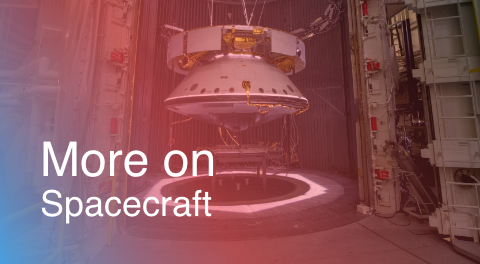
Getting to Mars
Learn more about this part of the spacecraft
-
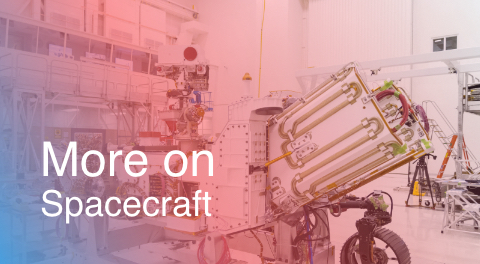
Power
Learn more about this part of the spacecraft
-
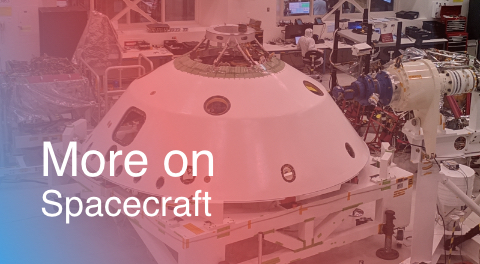
Telecommunications
Learn more about this part of the spacecraft
-
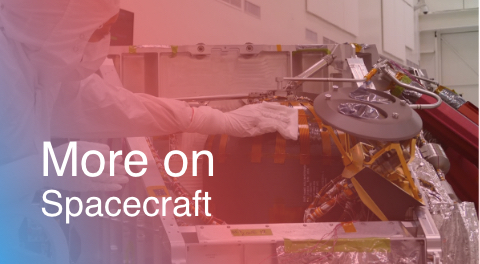
Biological Cleanliness
Learn more about this part of the mission
-
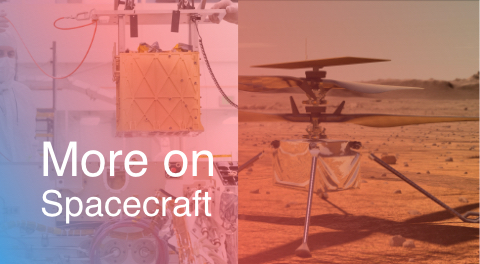
Experimental Technologies
Learn more about these technologies



